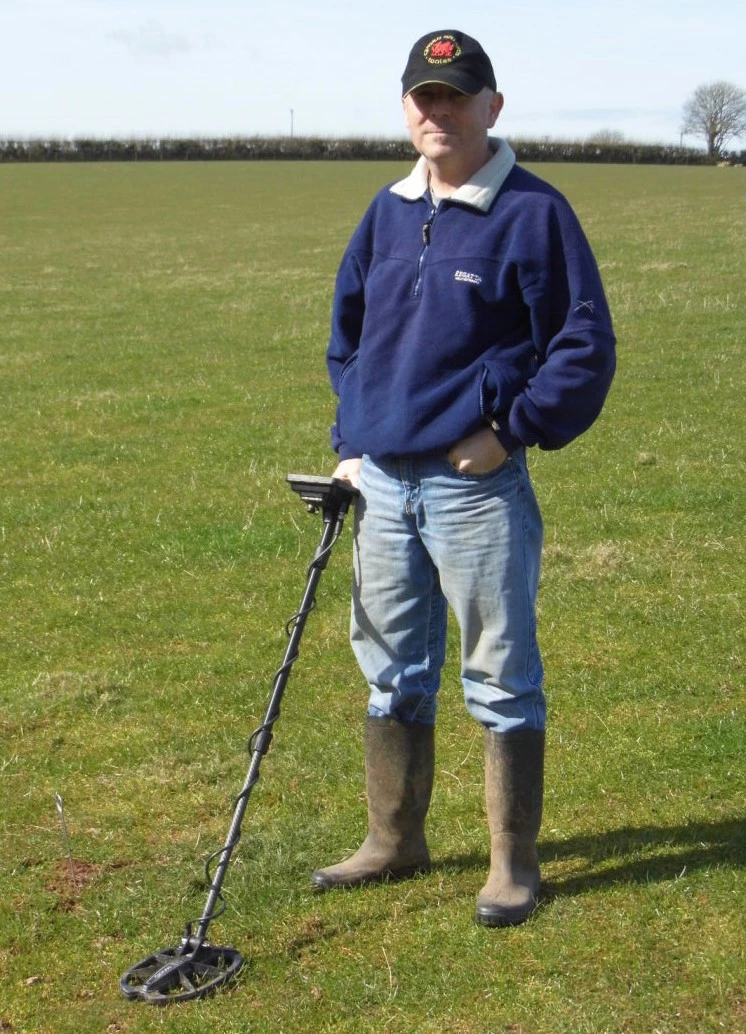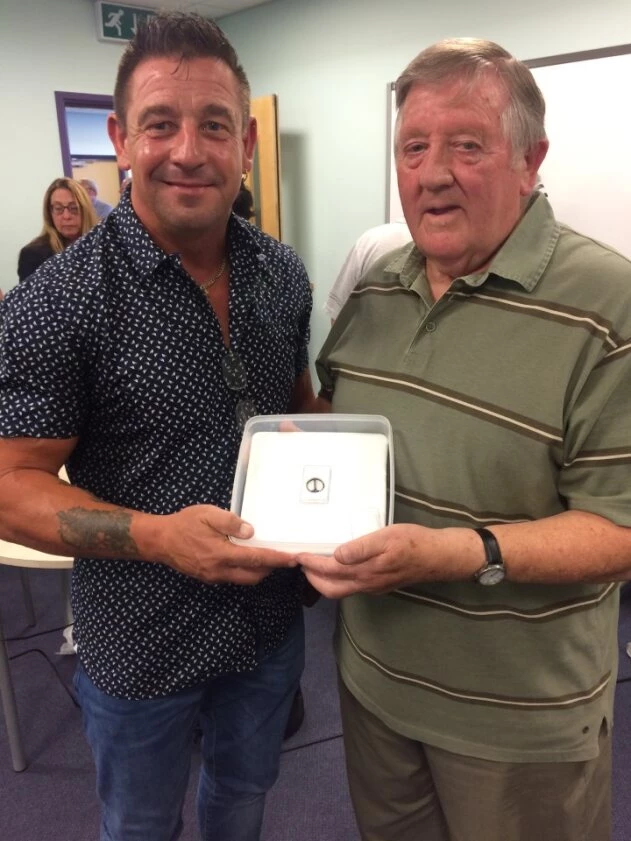What qualifies legally as Treasure
Mike Smith, the finder of the Pembrokeshire chariot burial in 2018.
Definition of Treasure
(the Treasure Act 1996 applies to finds made in Wales & England)
The following coin and artefact finds are Treasure under the Treasure Act 1996, if found after 24 September 1997 (or, in the case of the third listed category, if found after 1 January 2003)
- Any metallic object (artefact) other than a coin, provided that at least 10% by weight of metal is precious metal (that is, gold or silver) AND that it is at least 300 years old when found.
- An object (artefact) of prehistoric date will be Treasure if any part of it is precious metal.
- Any groups of two or more metal objects (artefacts) of any composition of prehistoric date that come from the same find (and found after 1 January 2003).
- Two or more coins containing at least 10% of gold and silver by weight of metal and over 300 years old, that come from the same find.
- Ten or more coins that contain less than 10% of gold or silver by weight of metal and over 300 years old, that come from the same find. Coin groups deemed as coming from the same find will normally be i) hoards, which have been deliberately hidden; ii) smaller groups of coins such as the content of purses and iii) votive or ritual deposits.
- Any object (artefact), whatever material it is made of, that is found in the same place as, or had previously been together with another object or objects that are Treasure.
- Any object that would previously have been treasure trove (i.e. under the law existing prior to the Treasure Act 1996), but does not fall within the specific categories above. Only objects that are less than 300 years old, that are made substantially of gold or silver, that have been deliberately hidden with the intention of recovery and whose owners or heirs are unknown will come into this category.
An object (artefact) or coin is part of the ‘same find’ as another object or coin if it is found in the same place (i.e. in direct association), or had originally been deposited or buried together with the other object. Often, associated finds can become scattered from their original burial place, commonly through recent disturbances, like farming activities.
Michael Evans, finder (left), at a special treasure event organized by Tredegar and District Museum in 2018, when they received his Medieval silver brooch find as their first treasure acquisition into their collection.
Additional definition of Treasure (from 30th July 2023)
A new significance-based class of Treasure is being introduced, in addition to the above existing classes of Treasure. This is designed to capture only those objects that, because of factors such as their rarity, provide an exceptional insight into an aspect of national or regional history, archaeology or culture.
An object will satisfy the significance criteria because of one or more of the following factors:
- It is a rare example of its type, if:
a. It meaningfully expands the known UK range of examples of a particular object type, object form, art-style or evidence of manufacturing technique and provides an exceptional insight into them.
b. It has a high level of preservation or completeness in comparison with other known examples, therefore providing an exceptional insight into an aspect of national or regional history, archaeology or culture.
c. The rare or unusual way it was used, treated or modified during its use-life in the past means it provides an exceptional insight into an aspect of national or regional history, archaeology or culture.
- The location of the find provides an exceptional insight into the specific history or culture of a place where found (whether it links with a specific location, the region, or the part of the UK – England, Wales or Northern Ireland – in which it was found).
- An object or group of objects can be closely associated with a particular person or event of historic importance and provides a significant insight into the understanding of that person or the event. There should be strong positive evidence of such an association; where the association is weak and the object does not contribute to a singular insight or understanding of that person or event, the find will not normally be considered Treasure.
The definition applies to any metal object or coin that is more than 200 years old, that does not meet any of the other existing classes of Treasure but satisfies the significance criteria listed above.
Single coins will be Treasure where they meet the significance criteria.
Significant artefact groups or assemblages will be Treasure, when objects in combination with other objects of the same find (such as base metal hoards or grave assemblages) provide an exceptional insight into an aspect of national or regional history, archaeology or culture.

